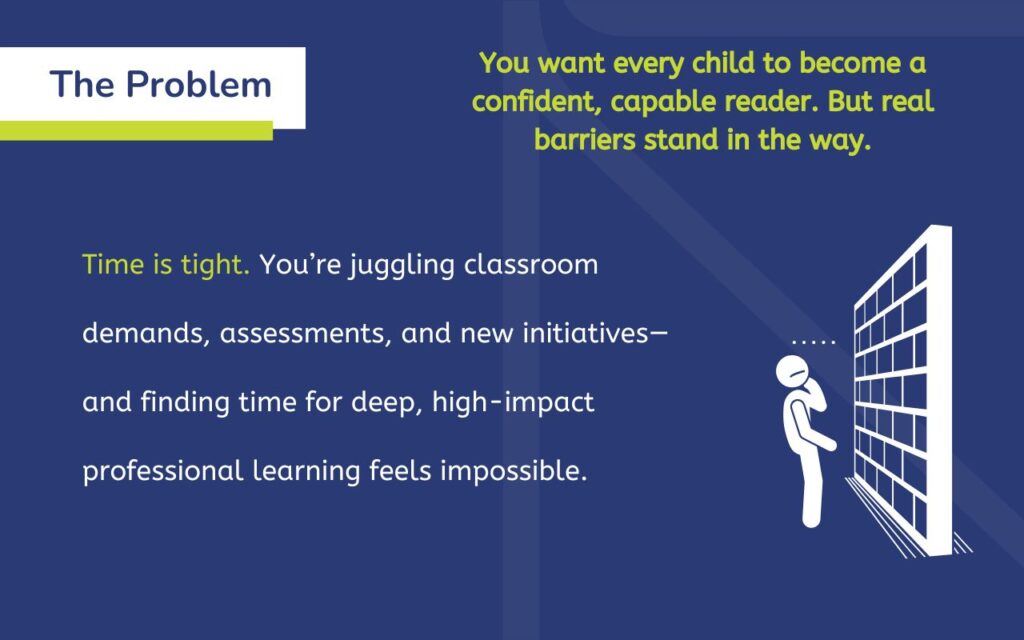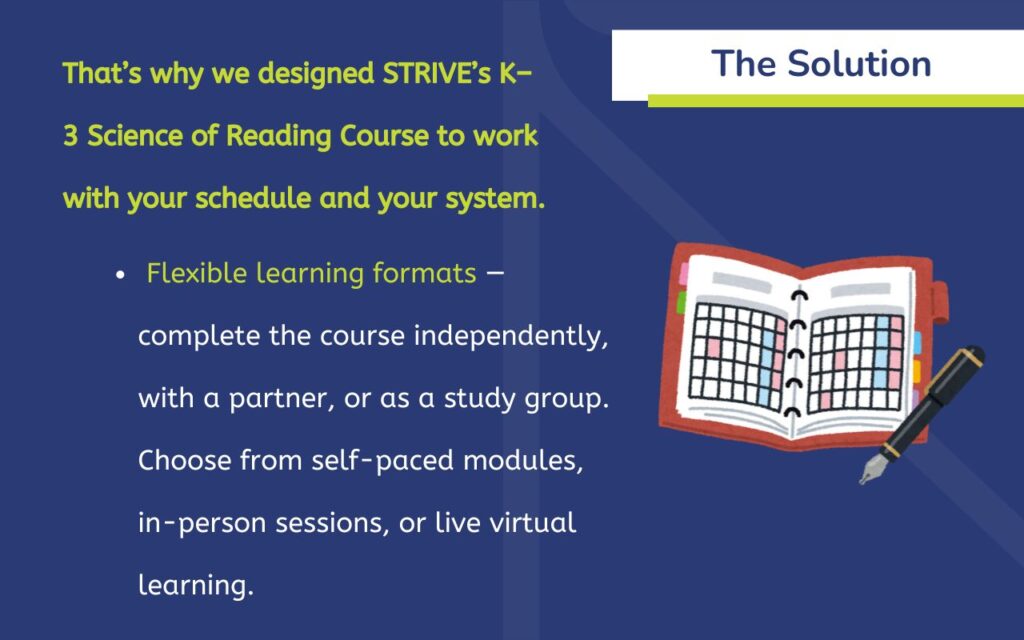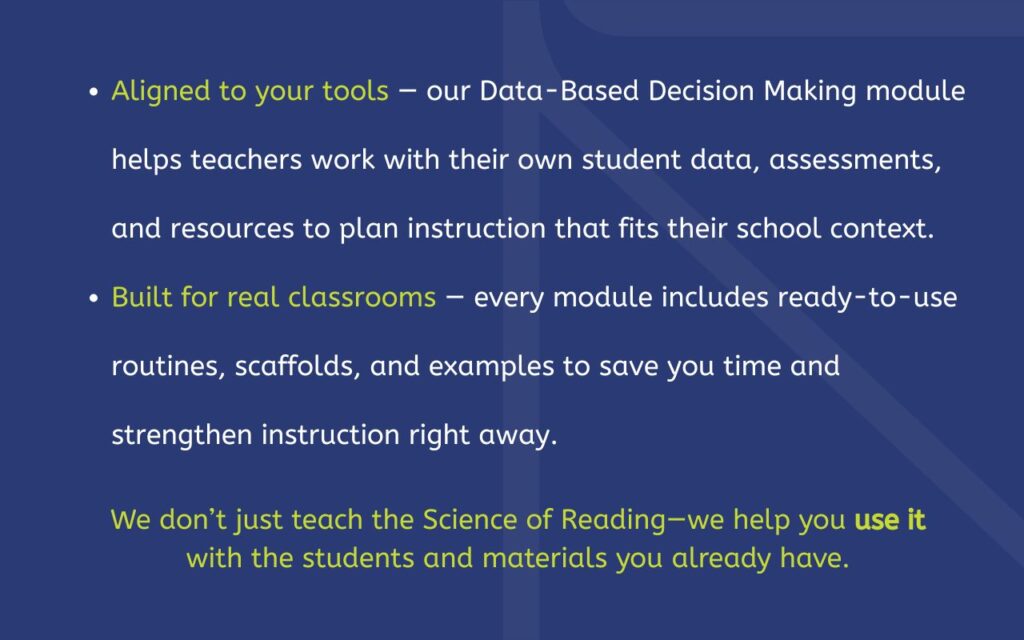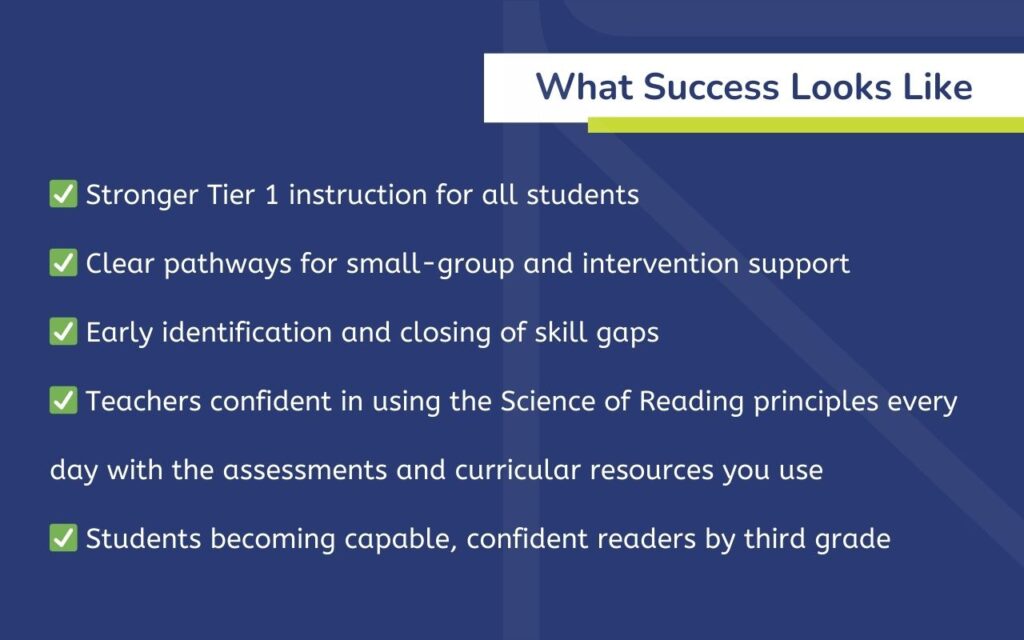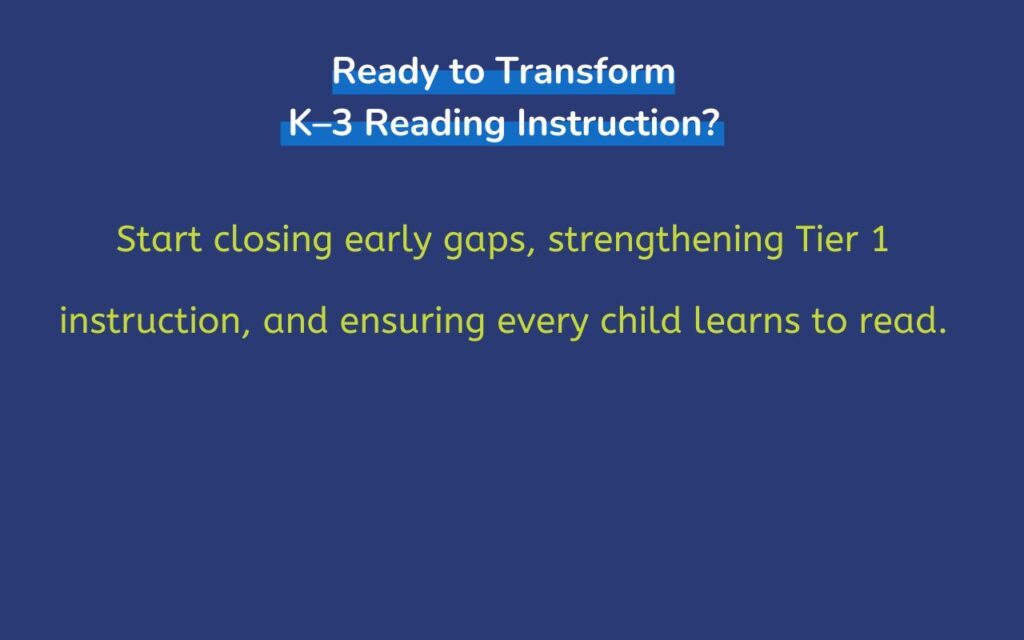STRIVE’s K–3 Science of Reading
Build Foundational Skills. Close Early Gaps. Teach Every Child to Read.
What You’ll Learn: A Step-by-Step Path
Our course follows a logical, research-based progression designed to move learning into real results.
Data-Based Decision Making
Start by learning how to use your student data to set instructional priorities, identify skill gaps, and group students flexibly.
➡️ This step sets the foundation for everything else you’ll learn.
🔍 The Essential Components of Reading
Each core module builds critical K–3 instructional skills:
Phonological Awareness
Learn how to assess and explicitly teach early sound skills like blending and segmenting to support beginning readers.
Phonics and Word Work
Gain tools to teach decoding and encoding skills, especially for students who need extra support to master foundational skills.
Fluency Development
Strengthen reading rate, accuracy, and expression with evidence-based strategies, helping students not yet meeting grade-level benchmarks.
Vocabulary and Oral Language
Build word knowledge and rich language experiences using direct and embedded vocabulary strategies that enhance comprehension.
Reading Comprehension
Teach students how to understand, discuss, and deeply engage with texts through purposeful comprehension instruction tied to grade-level standards and thinking critically about text.
✨ Bonus Modules
Understanding Dyslexia
Recognize early signs, use effective screeners, and implement structured literacy interventions to meet the needs of students with dyslexia.
Writing in Response to Reading
Learn how to build comprehension and language skills through scaffolded, purposeful writing tasks tied directly to what students are reading.

